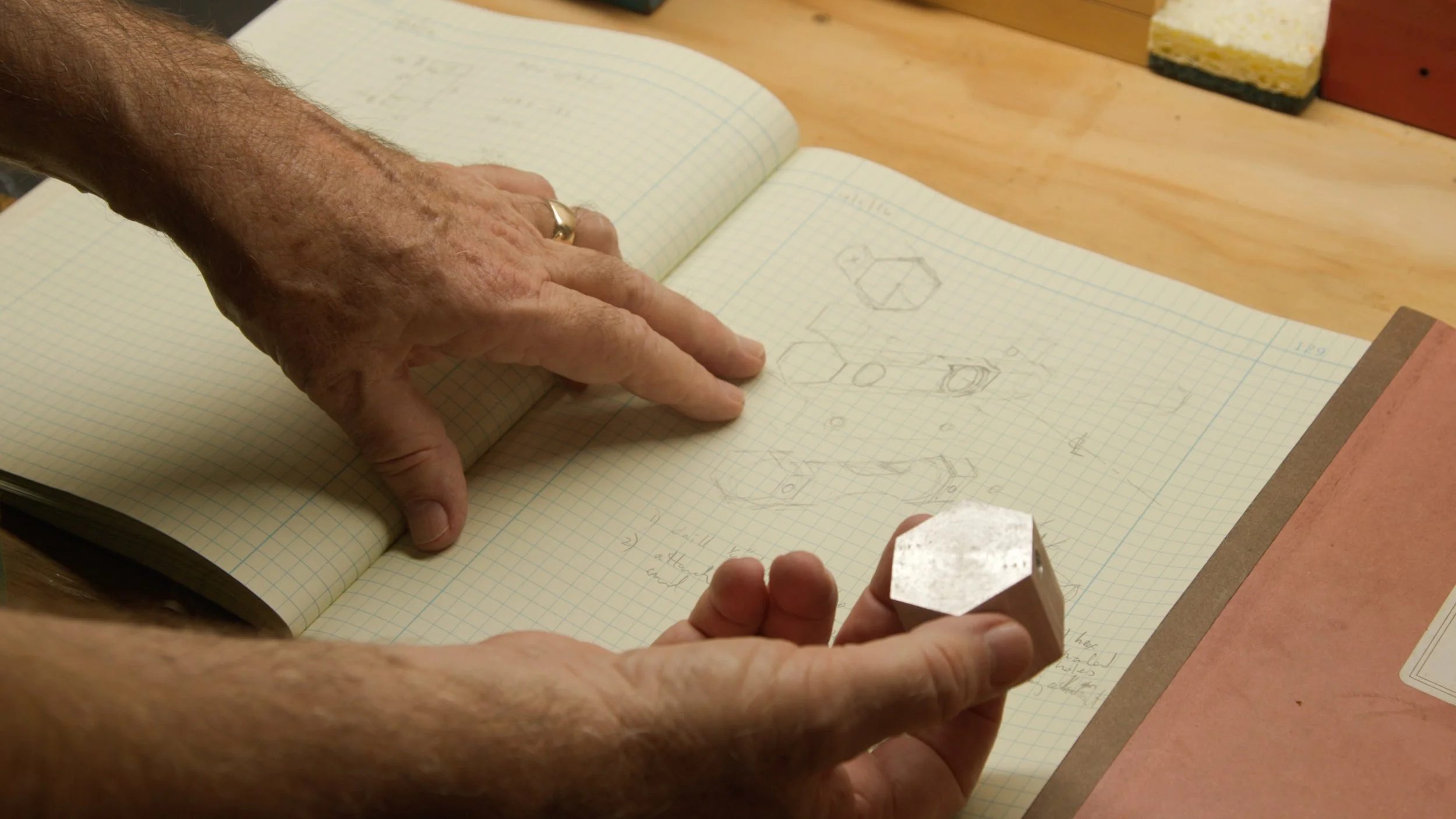
Design
[ Overview ]Reducing friction is about reducing the distance travelled
Arced Bearing Rotation
The kinematic linkage of the Brickley Engine utilizes arced bearing rotation to facilitate movement within the engine that would otherwise require full circular motion. The cumulative distance travelled of all arced movement is less than the sum of the full-circle, rotational distance traveled in a typical engine.
Force-Transfer Mechanism
The Force Transfer Mechanism refers to the innovative linkage between the crankshaft and the four engine pistons. Connecting all four of the pistons to one another prior to the crankshaft affords a shorter crankshaft and fewer main bearings, which significantly reduce friction.
Elimination of Piston Skirts
The near-linear travel of pistons within the Brickley Engine eliminates the need for piston skirts and, thus, their associated friction. Prior to the Brickley Engine’s design, pistons skirts were a source of friction that was simply assumed as necessary.
Fewer Bearings Rotating 360°
The Brickley Engine’s re-designed bottom end reduces the overall number of bearings that must travel 360°. For a comparable four-cylinder engine, the number decreased from nine bearings to just three.
Engine Specs
Displacement
692 cc
Configuration
Brickley 4-Cylinder
Proof-of-Concept
Engine Type
Arced Bearing Rotation
[Not only are the arced distances shorter, but the size of the bearings are smaller as well, which decreases the distance travelled even more.]The kinematic linkage of the Brickley Engine utilizes arced bearing rotation to facilitate the movement within the engine that, in a typical engine, would require full circular motion. The cumulative distance travelled of all the arced movement is a small fraction of the full-circle, rotational distance traveled in a typical engine.
Furthermore, the nature of the arced rotation allows for the pins and bearings to employ squeeze-film hydrodynamic lubrication for near-frictionless movement.
The Force-Transfer Mechanism
The Force Transfer Mechanism refers to the innovative linkage between the crankshaft and the engine’s four pistons. By connecting all four of the pistons to one another “upstream”, so to speak, of the crankshaft, the Brickley Engine is able to utilize a shorter crankshaft and fewer main bearings. The linkage not only significantly reduces engine friction, but also facilitates near-linear travel of the pistons.
Elimination of Piston Skirts
Typical / Traditional
Typical engines utilize crank-slider mechanisms that necessitate piston skirts to guide the piston down (and back up) the cylinder. While necessary for traditional configurations, the skirts are a large source of dragging friction, which occurs along the cylinder walls
The Brickley Engine
The near-linear travel of the pistons within the Brickley Engine eliminates the need for piston skirts and, thus, their associated friction. Prior to the Brickley Engine’s design, piston skirts were a source of friction that was simply assumed to be necessary.
Fewer Bearings Rotating 360°
The Brickley Engine’s re-designed bottom end reduces the overall number of bearings that must travel 360°. For just the crankshaft of a comparable four-cylinder engine, the number is decreased from nine bearings to just three.
Moreover, the configuration of the bearings which rotate 360° makes it possible for the bearings and pin joints (e.g., the ends of a typical engine connecting rod) to be smaller than their in-class counterparts.
3 > 9
Internally Balanced.
No Countershaft.
Countershafts are typical features of internal combustion engines due to the imbalances associated with mixing, rotating, and reciprocating masses. With the Brickley Engine, Mike Brickley sought to balance all eight equations—summing x and y forces and moments for both primary and secondary forces—to achieve an engine on which a nickel can be balanced.
